8th January 2021 – Shabbat is almost here
And today we’ll listen to the payṭan who gave back their cultural identity to the North African Jewish migrants in Israel: Rabbi David Bouzaglo
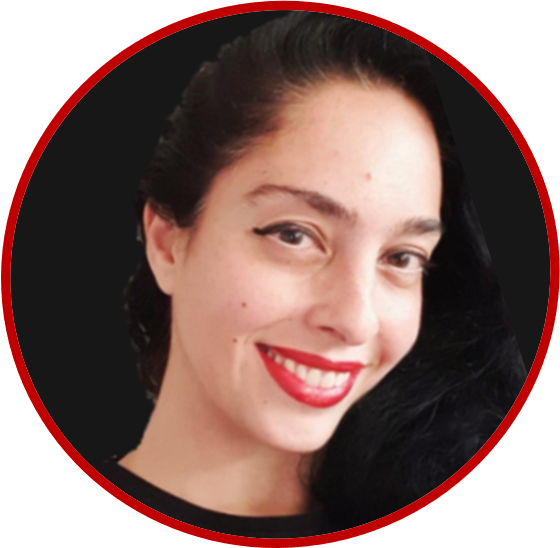
Hello, how are you? I hope well. In this edition I will mention again my friend Patricia Álvarez, who introduced me to Salim Halali (this is the post about him). She told me about Rabbi David Bouzaglo (you can find it written Buzaglo too), as she had met his great-granddaughter in Madrid. Patricia is a graduate in Arabic philology and she always shares with me this kind of information that can resonate with me. And to learn about Bouzaglo really did!
I hope that his work and his personality will also enlight you in some way. He is so human and at the same time so immortal.
– And, as usual, find the music piece at the bottom – ?
Can you imagine how he sounds? This image is included in the film A Song of Loves, of which you have more information below.
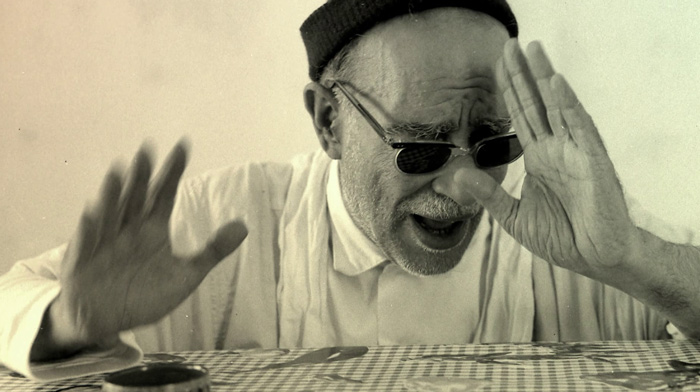
| Share the joy of music and learning with your beloved ones. Share MBS. Thank you in advance. |
| Share this with a friend, right from here |
Rabbi David Bouzaglo, the cultural redeemer
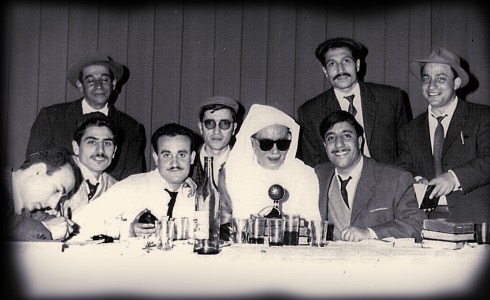
The life and the work of David Bouzaglo, his internal contradictions, his delicate balance between worldly pleasures and religious commitment, between pride in the devotion with which he was followed and the humility to consider himself to be just a person whom God gave the gift of stirring others with his singing… all this makes him a tremendously inspiring figure. In addition, his life tells of the events of the 20th century that transformed the human geography of the Mediterranean basin and much of Europe and the Americas.
I have chosen this picture to start this section because I can imagine the joy of these men in this moment, sharing the table with the much beloved Rabbi David Bouzaglo. The picture is from Morocco Jewish Times. In this article you have a brief bio in French. Why do I believe these men were full of joy? Because for his age, I think this was taken in Israel and Bouzaglo was a total benchmark, a saviour of the cultural identity of the North African Jews in Israel. I will elaborate on this idea a little later.
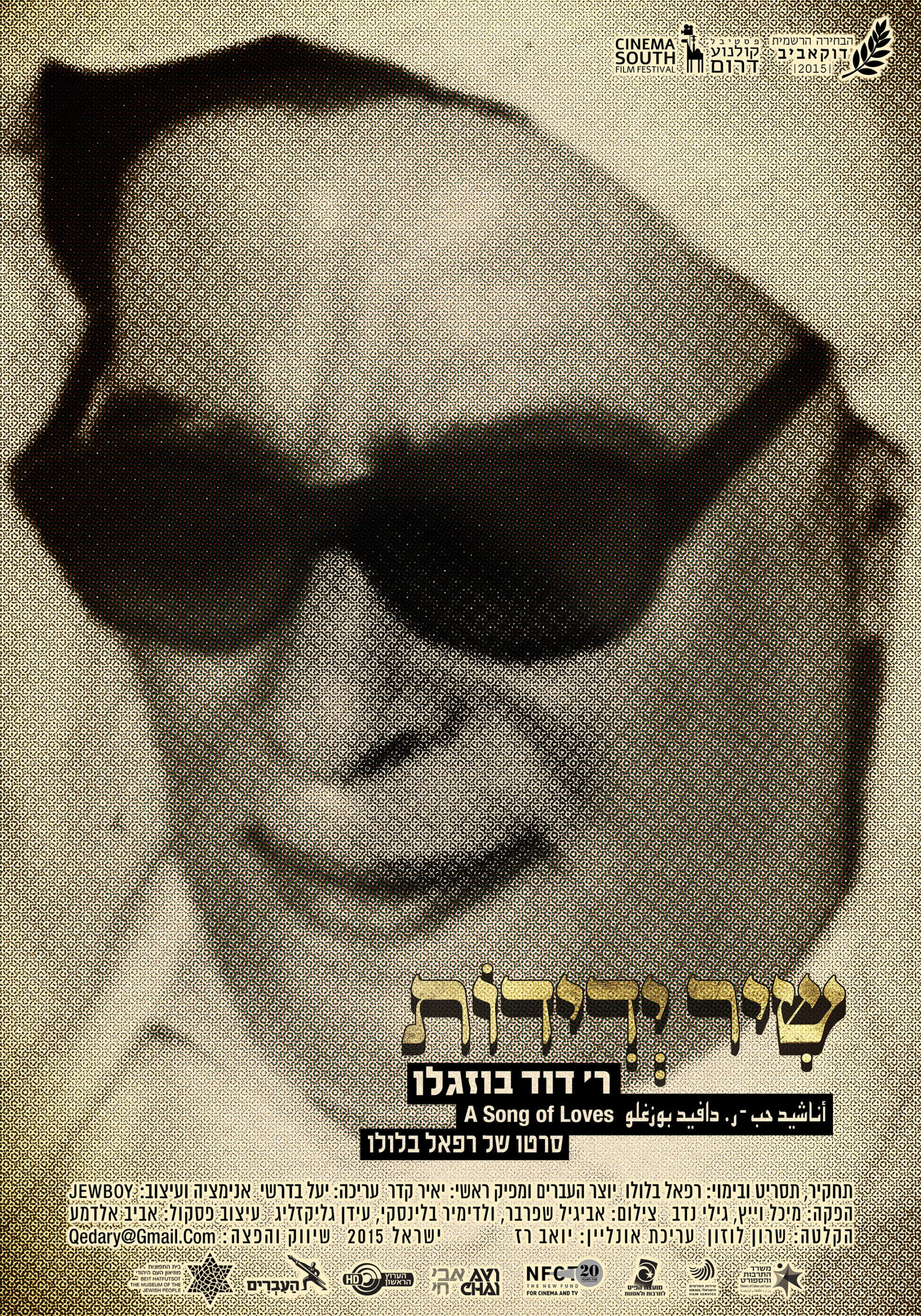
I think there are not many recordings of him. In Spotify I found nothing. There was a moment in his life when he decided not to record or to allow to be photographed. Neverthess, there are some great sources to learn about his work, especially this documentary film, A Song of Loves, from 2015, directed by Rafael Balulu. You have it here below? And the website of the film is this.
In the documentary, his biography is reviewed with the support of pupils, two daughters and one son and several scholars and followers. It is extremely interesting because it connects the artistic work with the different events of the life of Bouzaglo, like the early success as a singer with orchestras, the death of his elder son, the lost of his sight at the age of 46, the illness, the move from Casablanca to Israel, the wars, the need to work to maintain the family… And all along the film you listen to his voice on many occasions. I really recommend it with my heart.
This below is not the musical piece, but the documentary film, specifically the version with English subtitles:
His life, in brief
The sources of this brief bio and the section His work are Encyclopedia, Morocco Jewish Time and the work by Haim O. Rechnitzer “Haim Guri and Rabbi David Buzaglo: A Theo-Political Meeting Place of Zionist Sabra Poetry and Jewish Liturgy“, published at The Journal For The Study Of Sephardic & Mizrahi Jewry, June 2008, available here. And, of course, the documentary film.
David Bouzaglo was born in 1903 in Zawia, a small town near Marrakech, and received a traditional Jewish education which included Talmud and halakhah (Jewish religious law).
At the age of sixteen, he moved with his family to Casablanca where his traditional studies expanded to include poetry, liturgy, and Arab Andalusian music. Rabbi Buzaglo was soon considered a prodigy and was blessed with a phenomenal memory. He had a passion for Arabic music, especially Andalusian music. He liked to listen to the songs of Oum Kalthoum, Mohammad Abdelwahab and Asmahan. He wrote poems, with the same ease, both in Arabic and Hebrew.
He was married with two women. He was both cantor of liturgy and singer with orquestras, until his eldest son died and he considered it was a punishment from God and stopped his work as a singer.
Due to health problems and the loss of his eyesight in 1949, he did not accept a formal position as a rabbi and instead dedicated his life to teaching Hebrew, cantorial music, and religious poetry. While in Casablanca, Bouzaglo organized congregational youth choirs and taught them the tradition of piyyut. Many of his students became important payytanim affiliated with Moroccan congregations in Israel.
After his immigration to Israel in 1965 (he settled in Kiryat Yam), Bouzaglo took on a central role in the cultural reconstruction of the Jewish-Moroccan immigrant communities in Israel. His influence transcended the synagogue and his legacy inspired the subsequent generation of Mizrahi Israeli poets.
1973, the war of Yom Kippur produced a huge impact on him and his health. He would never recover totally and he died in 1975. His son Meir Buzaglo explains this very well in this interview for Haaretz:
“My father saw himself within the context of centuries of Diaspora Jewish existence. He saw the Jewish people in cosmic terms and was deeply affected by whatever his people experienced. There are some people like that. After 1973, my father didn’t resume cantorial duties in the synagogue on Yom Kippur; he grew steadily weaker and finally succumbed to a variety of ailments. Two years later, he died.”
At the time of Bouzaglo, there were probably many more synagogues in Casablanca (this article of El Mundo in 2015 mentions there have been 200 synagogues), but nevertheless, nowadays there are nowadays around 35. This picture below is from Facebook, by the user April Stewart Klausner, and it is the Temple Beth-El.
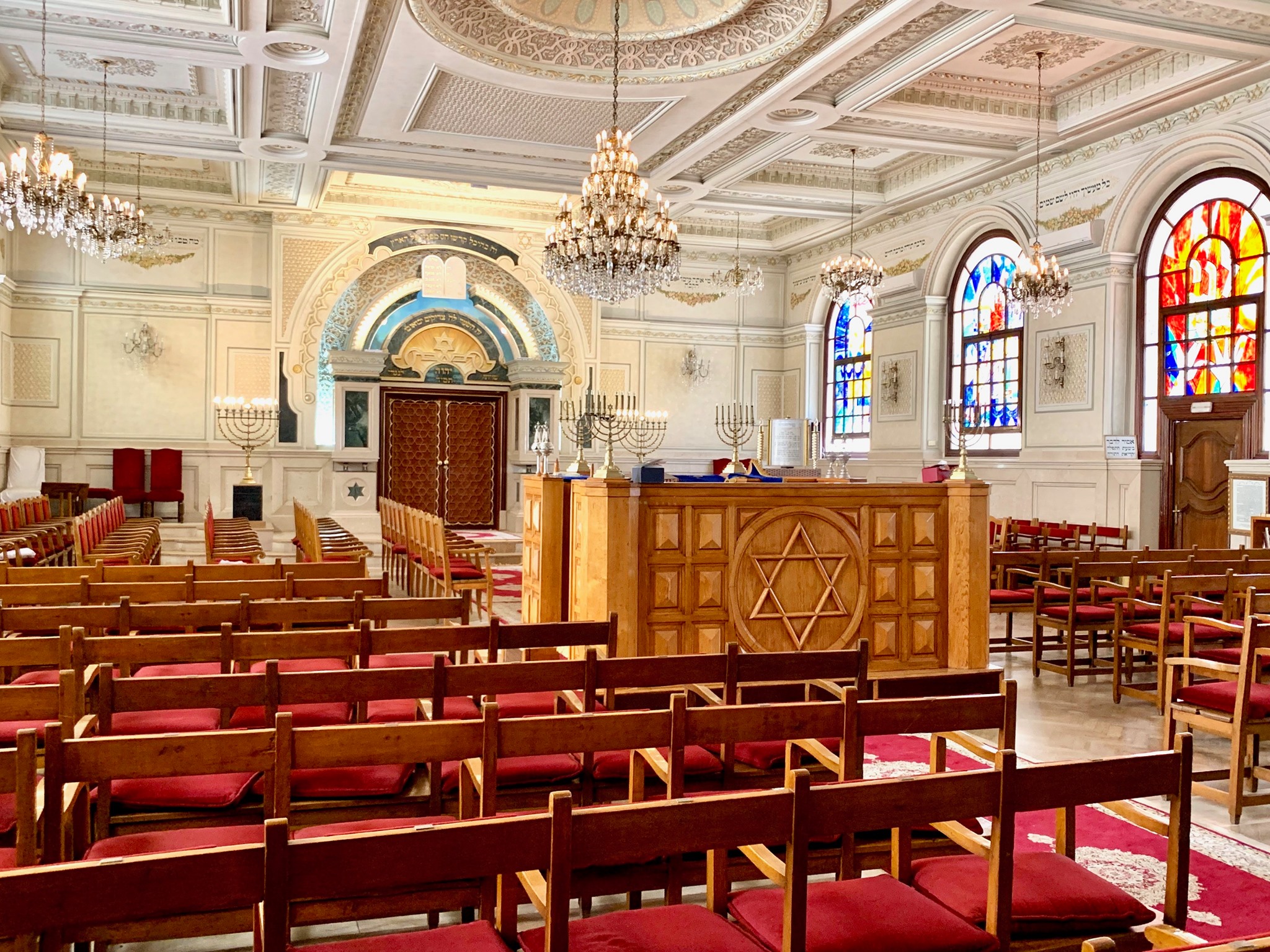
His work
In the documentary film mentioned above it is explained that Bouzaglo used preexisting melodies to sing religious topics (to create piyyutim). For instance, with Enta Omri, the song by Mohamed Abdel Wahab popularized by Oum Kalthoum (that was a popular song in Casablanca in Arabic) or with Babel el Wad (composed by Haim Guri, a popular song in Jerusalem in Hebrew). It is explained that he was able to remember a melody just by listening to it once and to create new lyrics for the melody.
Buzaglo composed hundreds of piyyutim in Hebrew and Judeo-Arabic. As an outstanding musician, his inborn talent enabled him to learn and master the highly sophisticated art of the Andalusian nūba to the extent that non-Jewish musicians used to seek his teaching and advise. This skillfulness magnified his great contribution to the singing of bakkashot (read below) both as interpreter and mentor.
Rabbi Buzaglo never put his piyyutim in writing nor did he ever agree to record his singing of them. His disciples learned the piyyutim by heart and later transcribed them.
He left almost no documentation of his art, always refusing insistently to be recorded, perhaps from a desire to preserve the magic halo of his live performances. Nevertheless, in 1957, in Casablanca, he made an exception and authorized the late Prof. Haim Zafrani to make a recording of a selection of chants and piyyuṭim. The Jewish Music Center of Tel Aviv’s Bet Hatefutzot published an album including this unique recorded material in 1984.
Why did he get such a devotion when he moved to Israel?
In the documentary film, there are several persons who explain the relevance of the settlement of Bouzaglo in Israel. You can check it exactly in this moment of the film. He was the cultural redeemer. The migrants from Morocco felt discriminated and the wonderful paytan from Morocco arrived and it gave them a source of national pride. Many of these migrants were from privileged backgrounds in Morocco but when they arrived in Israel their story was obliterated. He created a place for the artists who were seeking to continue the legacy of North African religious music.
According to Haaretz:
“It was midday on Yom Kippur, 1973. As in previous years, excitement was building around the small synagogue serving one of Israel’s Moroccan communities. To be among the lucky ones who would attend services on the Day of Judgment, people had come from all parts of the country. In fact, many had already arrived the day before the holiday, and slept on the ground outside in the hope of enjoying what would be for some the opportunity of a lifetime: the privilege on this solemn day of hearing the cantor, the renowned paytan Rabbi David Buzaglo.”
Haim O. Rechnitzer’s work has been hugely enlightening for some several aspects related to Bouzaglo. He quotes Yehuda Shenhav and I quote him:
“In his work, Yehuda Shenhav traces a pattern of suppression and effacement of the Arab-Jewish identity of immigrants to Israel from Arab countries. The Zionist enterprise required that the population conform to an identity ―package that included nationality, religion and ethnicity. Accordingly, the Mizrahi had to outwardly become a religious nationalist in the Ashkenazi mold in order to rid himself of being identified with the Arabs. This Zionization process resulted in the suppression of core elements of the identity and culture of the Arab-Jew. See Yehuda Shenhav, The Arab Jews: Nationalism, Religion and Ethnicity (Tel-Aviv: Am Oved, 2003), 16, 75.”
This paragraph may be clear enough to understand the relevance of a personality like Bouzaglo in Israel at the time of his arrival, 1965.
Bouzaglo was also a big inspiration for other artists, beside for his pupils. The contemporary Israeli poet, Erez Biton, testifies that Buzaglo was a medium of deep atavism that inspired Biton‘s own catharsis and was instrumental in the rediscovery of Biton‘s inner self and identity. Let me share just a few verses by Biton, a tribute to Bouzaglo. I found it in Turning Points in Jewish History, by Marc J. Rosenstein:
To the center stage
Rabbi David Buzaglo
When I remember you
My heart is a tree planted by
streams of water
When I followed myself I arrived at you
Then I found my own face in yours
The name of all my dreams of you
You and I from the ladle of honey
I met you within a great illumination.
The bakkashot or supplications
What is a piyyut and what is its place in Moroccan communities?
Haim O. Rechnitzer quotes the work by Mark Kligman, Diversity and Uniqueness: An Introduction to Sephardic Liturgical Music in Sephardic & Mizrahi Jewry, ed. Zion Zohar (New York: New York University Press, 2005), 264—273 in his aforementioned work and explains:
“A piyyut is a poetic text, often composed and performed in Hebrew that expresses religious concepts that are closely tied to the Jewish literary canon. Traditionally piyyutim are sung as part of the synagogue liturgy, in homes for festival celebrations, and in conjunction with lifecycle events. Moroccan and Syrian communities have developed a tradition of singing piyyutim called Shirat Bakashot (supplications) when people gather for singing before commencing their morning prayers.”
Bouzaglo was specially appreciated for his bakkashot, that is the reason why I have chosen one of them for us to listen together today.
| Share this with a friend, right from here |
More to listen
To listen more to him, here you are some links:
- This is a recording of Bouzaglu singing a piyyut, in 1957, shared by the World Jewish Congress on Facebook, accredited to the Museum of the Jewish People at Beit Hatfutsot.
- This is very nice but there is almost no information apart that it is a Havdalá, the prayer that announces the end of Shabbat and the beginning of a new week.
- This wonderful recording in the Youtube channel of The Museum of the Jewish People at Beit Hatfutsot. It says it is a recording from 1957 included in the album “Piyyutim in the Tradition of the Jews from Morocco” released in 2001 by the Beit Hatfutsot Museum.
The bakkashot recorded in Yom Kippur of 1957
As mentioned above Bouzaglo didn’t allow to make recordings of his performances, with very few exemptions and one was Prof. Haim Zafrani, who was a historian and literary scholar, head of the Hebrew Language and Jewish Civilization at the University of Paris and one of the most important scholars of North African Jewry. This recording is available in the Youtube channel of Rafael Balulu.
Lyrics
You established the Earth.
And you created it all
And formed the creatures within it
You observed the world
of chaos and darkness over the depths
You banished darkness and established light
I hope you’ll like it and, if so, feel free to share it and invite your friends to join us.
It is as symple as sending … this link to sign up
Shabbat Shalom.
Araceli Tzigane | Mapamundi Música
And we share with you one hour of music for joy in this playlist.
To know more about our artists, click here.
May you always find the light in your path.
These is our artistic offer for live show:
Gulaza – Janusz Prusinowski Kompania Jewish Memory
